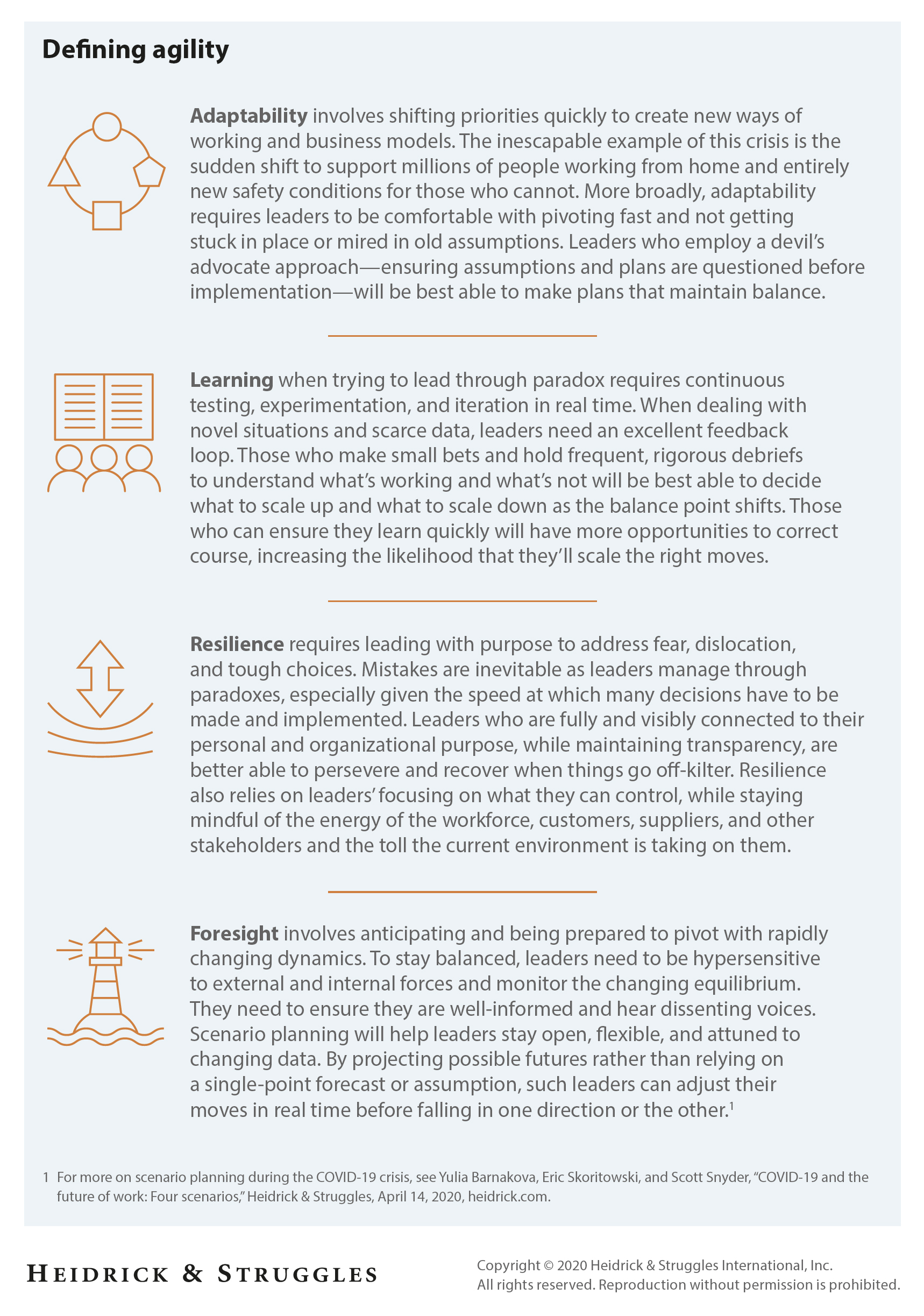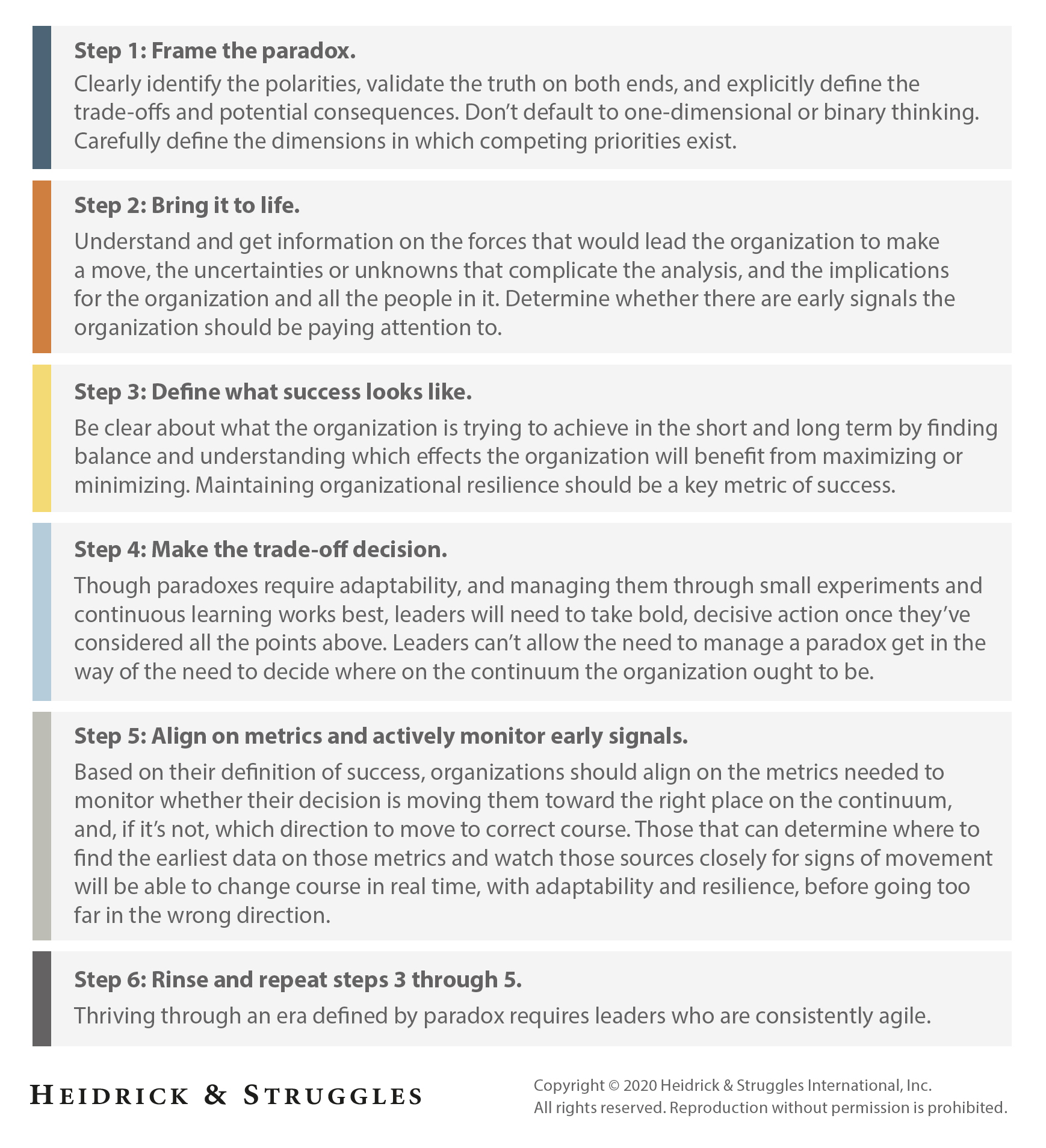COVID-19 Rebuilding
Navigating paradox with agility
At this moment, world, local, and business leaders, plus all of us in our homes, are wrestling with the dilemma of staying home to stay healthy and going out to reinvigorate our economies. This paradox is just one of many the COVID-19 crisis has created. How do we have transparency of data so we know who is sick, and whether we have been in contact with someone potentially contagious, while maintaining individual privacy? How do we balance a globally interdependent economy with meeting local needs?
Polarities like these are not problems to be solved, but tensions to be managed. To complicate the matter, the two poles are interdependent: economic health impacts population health, and vice versa. There is no single answer, and those who seek one are deluding themselves. Such polarities are, however, manageable. To thrive in an era when so many decisions present paradoxes, we need to reframe what it means to “solve” them.
How can leaders navigate uncertainty, ambiguity, and competing pressures when there is no right or wrong? In a word: agility. Leaders must continually strike the right balance between the two poles of, for example, human and economic health. Just like physical balance on a seesaw, tightrope, or dance floor, leadership agility depends on intricate balance. We define agility as demonstrating adaptability, learning, resilience, and foresight.

Leaders wrestling with today’s paradoxes will not win by trying to resolve the unresolvable. Instead, they can stay agile by reframing what may seem like unreconcilable goals, analyzing the underlying tensions, defining success in the context of the paradox, and then closely monitoring the plans they implement while remaining flexible. This means taking the following practical steps:

In a world where there is more gray than black and white, more tension than absolutes, more movement than stillness, the ability to keep your balance becomes disproportionately and enduringly important. By taking the steps outlined in this article, leaders will be able to maintain their own and their organizations’ agility when facing a paradox.
About the authors
Steven Krupp (skrupp@heidrick.com) is a senior partner in Heidrick & Struggles’ Philadelphia office and a member of Heidrick Consulting and the CEO & Board Practice.
Alex Libson (alibson@heidrick.com) is a principal in the Philadelphia office and a member of Heidrick Consulting.